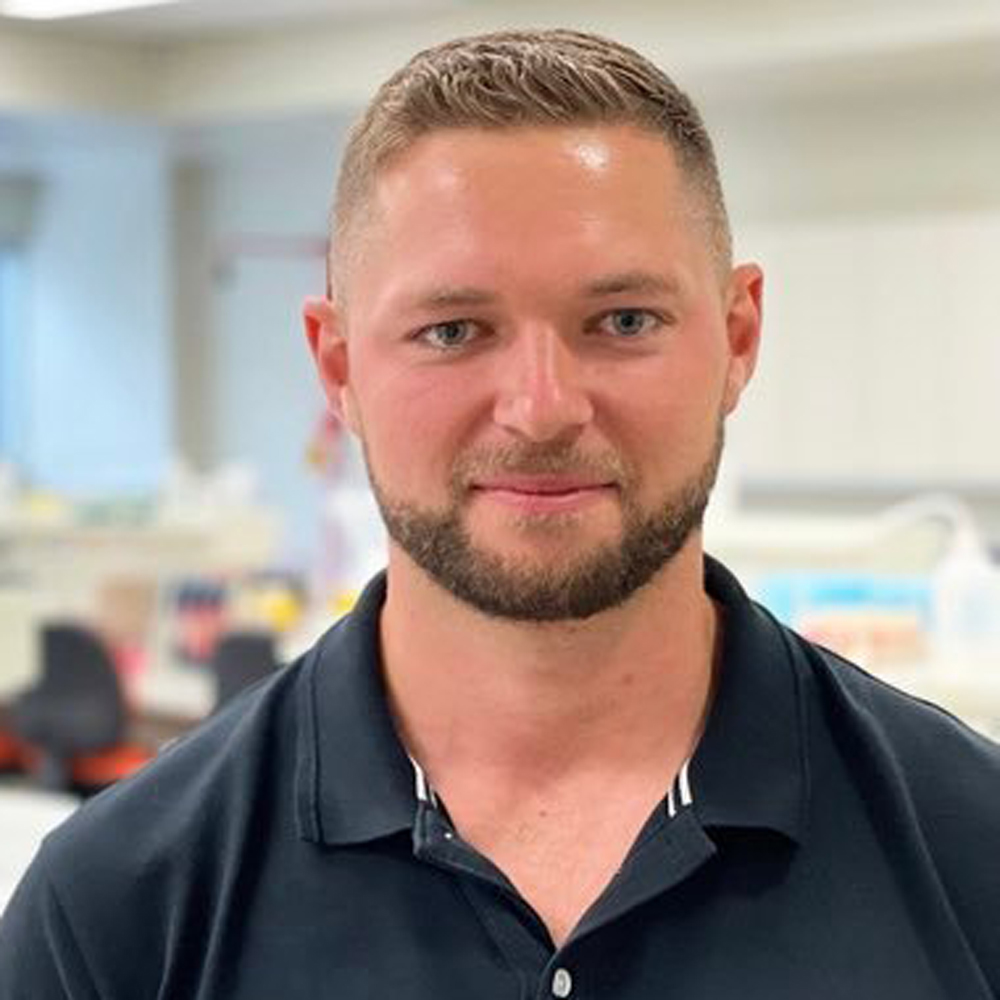Research Funding Round 2020
The 2020 PCFA funding round called for applications from early career researchers under the Priority Impact Research Award – Young Investigator (PIRA-YI) scheme.
PCFA called for research proposals that addressed one or more of the following priority research areas:
Priority Research Area 1:
Research that uses existing Australian repositories of biological samples from men with prostate cancer to better predict prostate cancer’s progression.
Priority Research Area 2:
Research to develop less invasive prostate cancer diagnostics that show promise but need more evidence.
Priority Research Area 5:
Research that advances knowledge and understanding of the impact of prostate cancer on men’s lives and the lives of their partners and their families.
PCFA awarded 5 Young Investigator Research Grants in 2020.

Dr Richard Rebello, Monash University
Screening for genetic vulnerabilities in CHR8Q-amplified prostate cancer
Progression to end-stage prostate cancer is associated with increased copies of cancer-causing genes in the original tumour. This increase commonly occurs in the DNA surrounding the 'MYC' gene, a strong cancer driver, and involves more than 400 other genes. This study will investigate the specific additional genetic changes thought to drive a poor survival in this group of patients and determines whether these changes are weaknesses that can be exploited as drug targets or as early detection biomarkers, in a precision medicine approach to cancer care.

Dr Kate Mahon, Chris O’Brien Lifehouse
Targeting lipid metabolism in advanced prostate cancer
Prostate cancer remains a major cause of cancer-related death. Patterns of circulating lipids are associated with poor response to treatment and shorter life related to prostate cancer. In this project, we plan to identify drugs which can reverse the patterns of lipids in the blood. In the future, this will allow the development of new metabolic approaches to treatment to potentially improve survival and quality of life in men with lethal prostate cancer.

Dr Carolyn Mazariego, Cancer Council NSW
What are the needs of prostate cancer patients, and their partners in Australia? A study that will describe unmet needs and strategies to best satisfy them – $139,600
This research aims to identify the needs of prostate cancer patients and their partners. We are interested in talking about any unsatisfied needs post-treatment or management choice. These would include physical, psychological, and support needs that are still unsatisfied. In order to do this, we will be sending out surveys to men, and their partners enrolled in the Australian wide Prostate Cancer Outcomes Registry. From the survey we will identify the most commonly reported unsatisfied needs and ask men and their partners to talk to us further about how we can best help them meet these needs.

Dr Sam Faulkner, University of Newcastle
Cellular stress to identify the most aggressive forms of prostate cancer
Nerves play a critical role in stimulating prostate cancer growth and metastasis. We have obtained exciting new data showing that nerve infiltration is initiated by the cellular stress experienced by prostate cancer cells. This project will test the value of cellular stress as a biomarker to identify aggressive prostate cancer at the time of diagnosis, as well as the potential of targeting cellular stress to prevent nerve infiltration and disease progression.

Dr Katie Owen, University of Melbourne
Exploiting novel suppressors of immune signalling pathways in prostate cancer cells to predict and prevent spread to bone
The spread (metastasis) of prostate cancer cells to bone is hard to predict, currently untreatable and ultimately fatal. Our research has identified that an immune signalling pathway, normally intact in less aggressive prostate cancer cells, is suppressed when cancer cells move to bone. Loss of this pathway makes the tumour cells invisible, allowing evasion of immune detection and subsequent growth. We will utilise these pathway changes to identify men most at-risk of bone metastasis and explore how blocking this pathway loss in tumour cells can prevent prostate cancer spread to bone.

